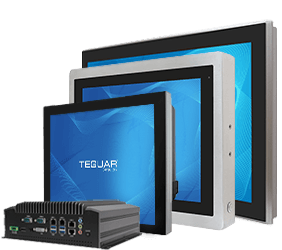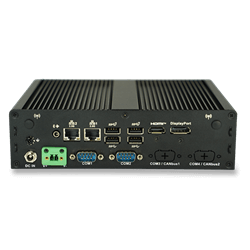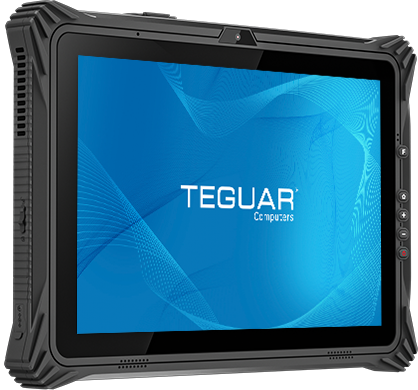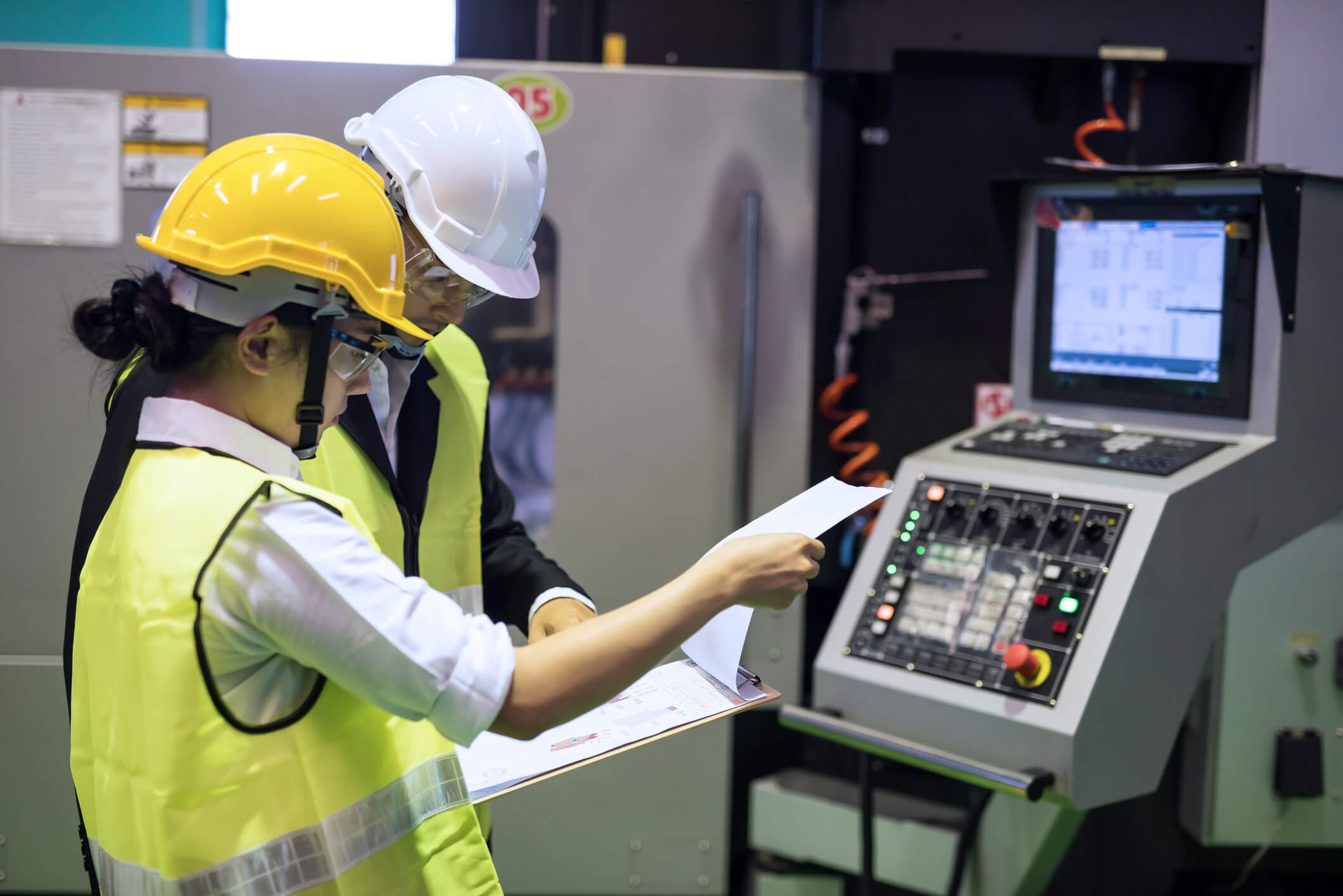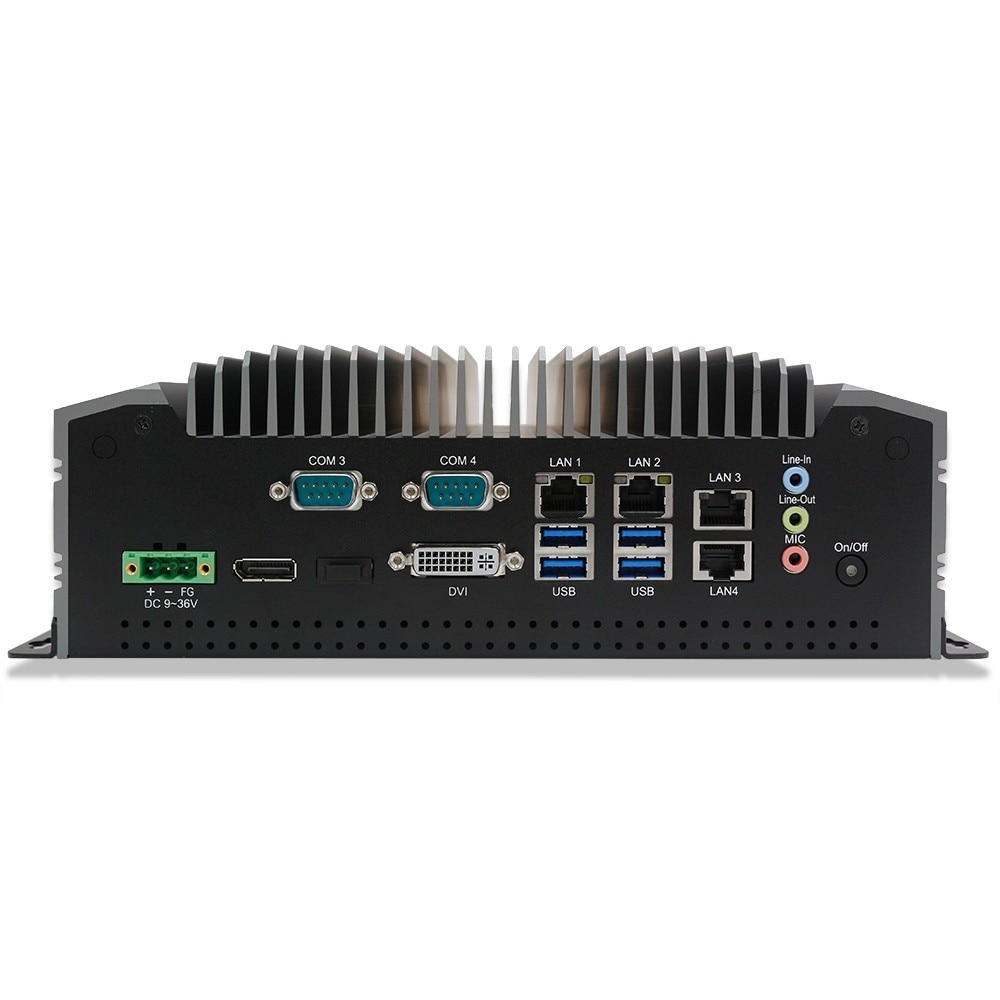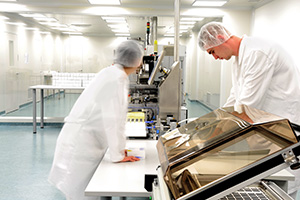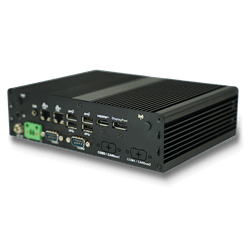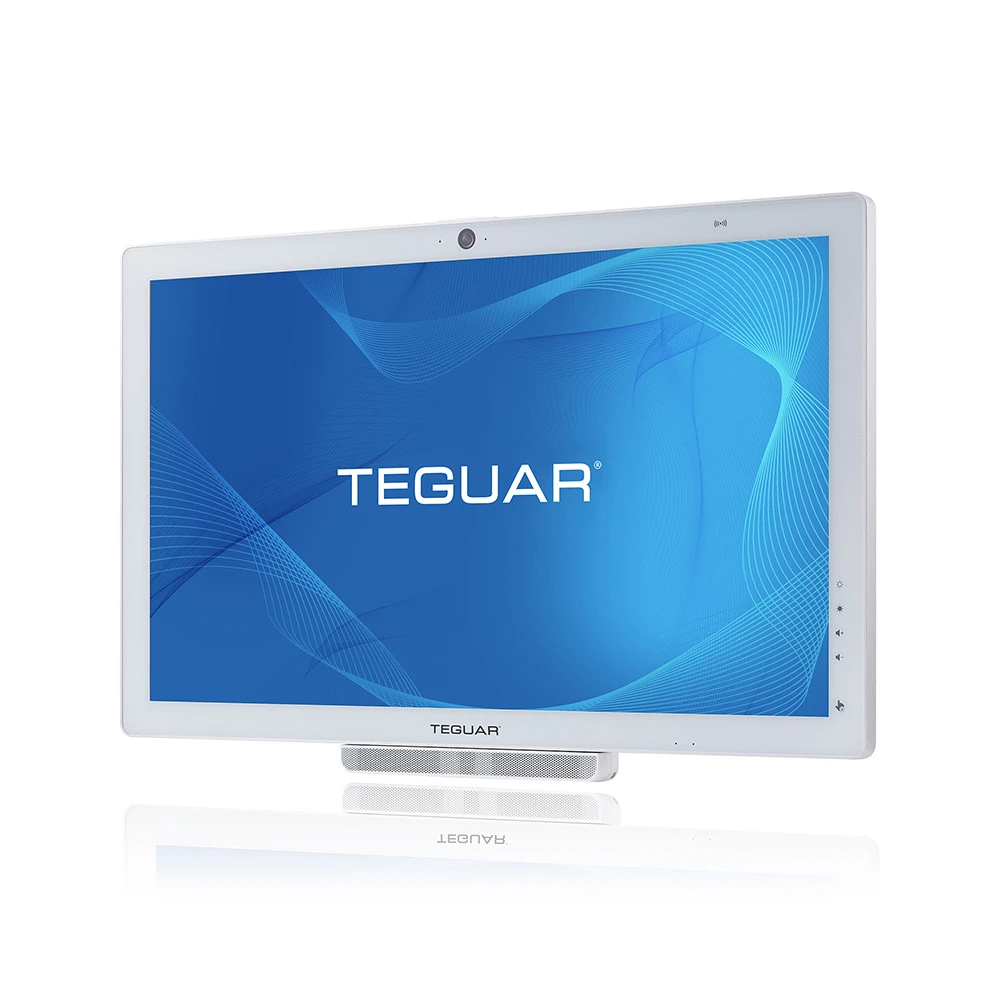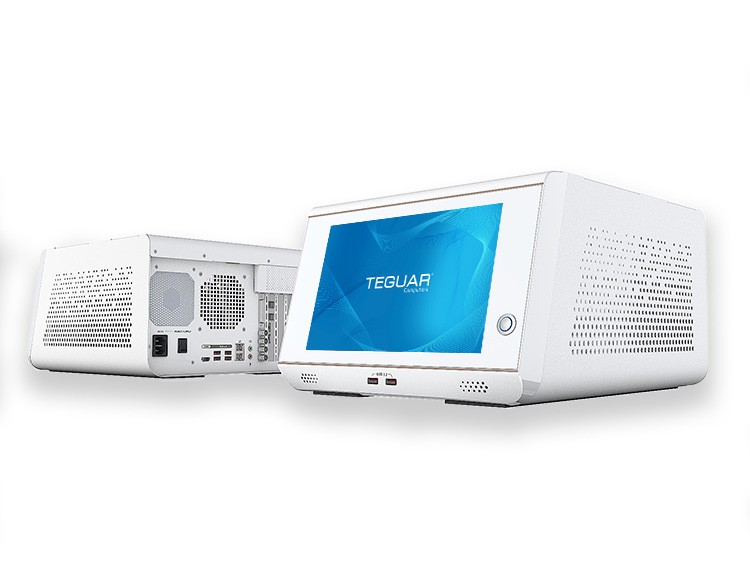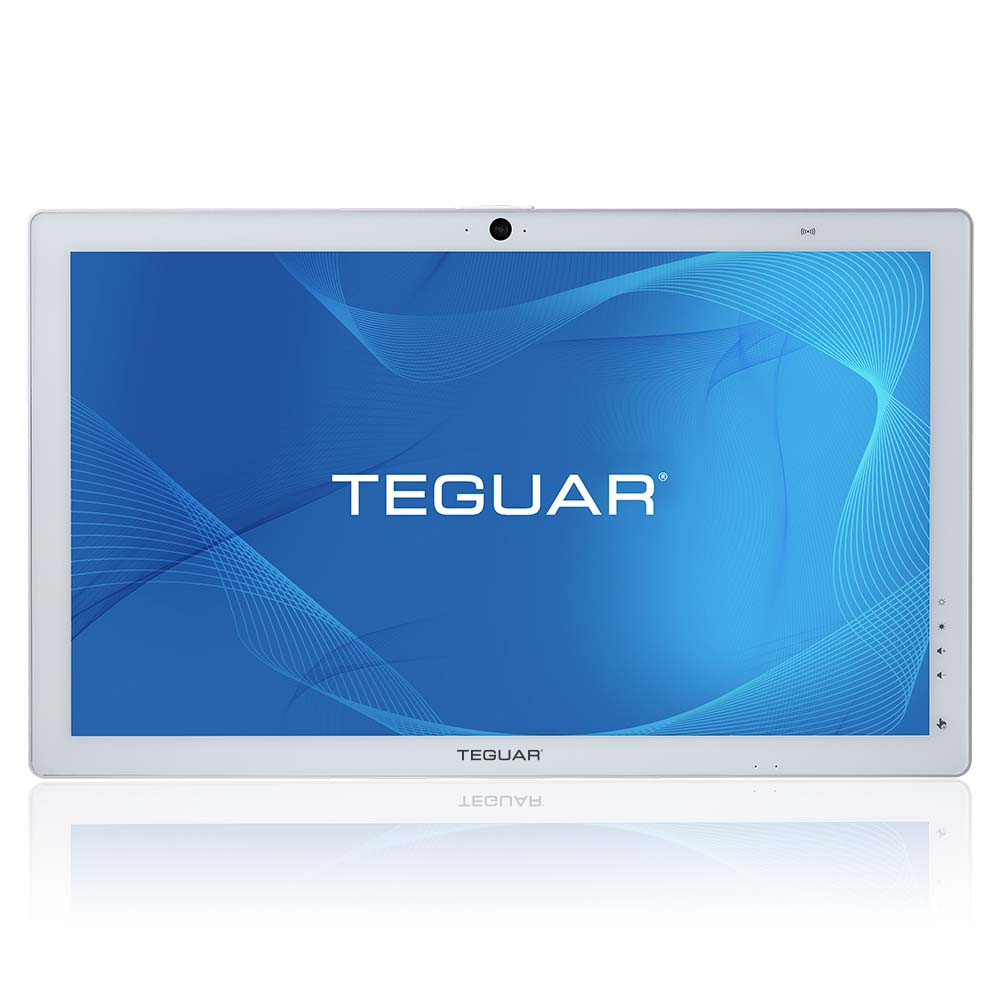How to Surf the IIOT Technology Wave
 Background: In manufacturing industries the IoT becomes the IIoT (Industrial Internet of Things) often referred to as Industry 4.0 in Europe. The IIoT is differentiated from the IoT as the IIoT is referring more to machine data and the IoT is referring to all types of data, including human health and behavior. The idea is that when we collect data, integrate data and make increasingly complicated decision in real-time, we will avoid huge down time losses, take leaps in productivity, and create new business opportunities. It is projected that by 2020 there will be 9 Trillion Dollars[i] generated from the IoT which will transform the landscape of business.
Background: In manufacturing industries the IoT becomes the IIoT (Industrial Internet of Things) often referred to as Industry 4.0 in Europe. The IIoT is differentiated from the IoT as the IIoT is referring more to machine data and the IoT is referring to all types of data, including human health and behavior. The idea is that when we collect data, integrate data and make increasingly complicated decision in real-time, we will avoid huge down time losses, take leaps in productivity, and create new business opportunities. It is projected that by 2020 there will be 9 Trillion Dollars[i] generated from the IoT which will transform the landscape of business.
 Introduction
Introduction
There is a massive rising swell of articles, blogs, webinars, conferences and other pieces of information about the IoT (Internet of Things), but what do we do with all this? As sensor deployment increase and computing processing abilities expand, we are confronted with unending, unrelenting big data waves hitting us from every direction.
We are just seeing the beginning of what is has been called the next industrial revolution. Companies that are able to successfully ride the cusp of any disruptive technology come out as winners in the end. This short paper provides a framework of thought and gives practical steps to help your business avoid being wiped out by the IIOT and succeed in making the transition to new models of thinking.
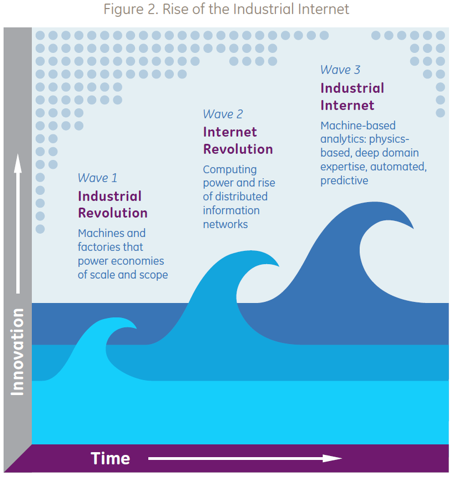
“The deeper meshing of the digital world with the world of machines holds the potential to bring about profound transformation to global industry, and in turn to many aspects of daily life, including the way many of us do our jobs. These innovations promise to bring greater speed and efficiency to industries as diverse as aviation, rail transportation, power generation, oil and gas development, and healthcare delivery.”
– David Cronberger, Cisco Systems[iii]
Process
Step 1: Orient Yourself
Focus your mindset on a new business environment. It’s water, not land.
The biggest change the IIOT brings with it is actually not the amount of data, or even the connectivity of data. It is the responsiveness of data. It is the ability to actively respond to conditions as they happen in the same way a surfer must respond to tides, shifting currents, and atmospheric conditions. Up until now, businesses have been walking on “land data” which is underfoot as it is always past data.
We need to orient ourselves to the idea of actively swimming in data. This means suspending belief in our current business models to attempt to grasp what is on the horizon. In an article on Information-Age.com regarding bringing the IoT to industry, it says “In many cases, this will mean building new business models and software platforms that will help create, distribute and monetize the outcome-based services at an unprecedented speed and scale” [iv] It’s time to look at your current business model with a critical eye. Is it suited to grow with new technology? Do you have the agility needed to capture and successfully use increasing amounts of information?
Taking on a new business model can be intimidating. Well-known entrepreneur Richard Branson says, “When you first think through an idea, it’s important not to get bogged down in complexity. Thinking simply and clearly is hard to do.” A re-orienting of your business toward innovations and a whole-hearted embrace of the challenges that come with it is what is needed to stay at the top of your industry.
“The Senior Leaders across all organizations (who) must understand IoT fundamentals and the strategic importance of IoT in their Business Plans.”[v]
Thoughts to Consider
- Leadership needs to solidify purposes and outcomes of their enterprise as the ways and means to accomplish goals are changing drastically.
- Employees need to become more nimble as they will have more advanced tools at hand. As Howard Schultz proclaims, it’s important not to be threatened by people smarter than us. This applies even more to technology. Do not be threatened by machines, computer programs, or robots which seem smarter than you. At this point, robots have no ambitions of ruling the world.
- Commit to this: “You get one lesson and then it’s a lifetime of surfing homework.” – Rusty Miller, Surfing Legend. Basically you need to commit to be a life-long learner utilizing the possibilities of technology. You may not need to know exactly how that technology works, but you do need to know what you could accomplish with it.
Step 2: Get Equipped
Determine what you have and find out what you need.
Begin by appointing your companies IIoT or Industry 4.0 lead team. These people will be responsible for communicating business shift possibilities according to optimal outcomes and assessing what is currently present. IIotaudit.com has broken up what is needed into seven layers listed below. Establish a baseline of where you are at with each layer.
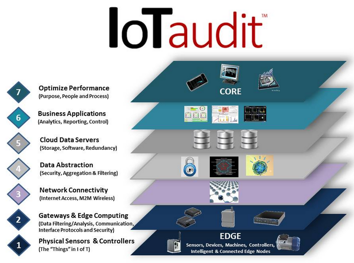 IoT Audit 7 Layer Reference Model[vi]
IoT Audit 7 Layer Reference Model[vi]
- Physical Sensors & Controllers: Sensors, Devices, Machine, Controllers, Intelligent and Connected Edge nodes
- Gateways & Edge Computing: Data Filtering/ Analysis, Communication, Interface Protocols and Security
- Network Connectivity: Internet Access, M2M Wireless
- Data Abstraction: Security, Aggregation and Access
- Cloud Data Storage: Storage, Content Delivery
- Business Applications: Analytics, Reporting Control
- Optimize Performance: Purpose, People and Process
“It isn’t enough to simply layer IoT technologies on top of the existing infrastructure; those looking to embrace the IIoT successfully must lay the groundwork by digitalizing their operating environments. This is no small task and so it is vital to ensure that you are able to walk before you try to run ”
– Information-Age.com[i]
 The Seven Layers are Composed of these Four Elements:
The Seven Layers are Composed of these Four Elements:
- Data Collection Devices
- Industrial Computers
- Software
- IIoT Field Data Experts
Reliable, advanced computers combined with targeted software that is deployed in a well-connected network are what enable the IIoT to run well. When choosing any of these elements, it is paramount to build in quality from the foundation. Finding vendors like Teguar Computers will enable your company to get a customized computer hardware solution that can be placed in any type of environment. Choosing Industrial all-in-one computers for maximum configurability will help extend the life of your computer hardware and give you a better ROI on your IIoT investment.
Ultimately, the IIoT is about humans working in tandem with smart machines. Two foundational factors in IIot planning are choosing which humans are to take the IIoT lead and which hardware and sensor suppliers can adapt with you along the way.
Step 3: Get Started
Begin with the goal of gaining experience and momentum.
Pop-up: “The process of a surfer getting to ones feet on a surfboard, just after catching the wave.”[viii]
Once you have your data collection devices, your industrial computer hardware vendor, your software, and your field data experts, you will need to launch your first IIoT or Industry 4.0 initiative. This is where the convergence of operations and IT departments happens. The two leads need to work closely together to create a test area for quality objectives to begin within a company. Choosing one area at a time will help before trying to connect all possible pieces of information from a facility.
Places to test IIOT focused business improvement goals:
- Productivity Monitoring Metrics
- Predicting Equipment Failure and Maintenance
- Shop Floor Automation Software Enhancement
- Network Security Monitoring Data
Step 4: Catch the Wave
Drop in the zone and learn as you go.
“It’s still fairly early in the IIoT game, and there’s a fear of change that will take people some time to get over”
– IIoT Automation Conference Panel[ix]
The important thing is to begin in some way now and keep moving forward. The wave is coming and will continue to grow. It is crucial to do two things.
- Know the importance of new technology. Learn the discipline of seeing how to apply new information to your industry. Businesses need to see a wave coming to keep from being bowled over by a disruptive concept.
- Get adept at implementing changes quickly. Have a structure and a culture in your organization that can adapt to the swells. Transformation is here at a breakneck speed. Traditionally industrial has been slow to implement. Those that resist industry change will likely lose in the end.
The key is having a management system that can be intuitively adaptable to external factors of significance. Within sports athletes train to be able to perform regardless of external conditions. This comes as a result of years of training to be able to respond without stopping and overthinking it. Knowing how to use the IIoT can be learned in a similar way. Develop the muscle of effectively using data science and big data to gain performance pivots toward profitability. The increments of change will quickly add up. GE (general electric) has an IIoT slogan that says “The Power of 1 Percent”[x]. If this one percent is continual improvement, it will make a huge difference over time.
Thoughts to Consider
- Pieces of information previously considered trivial or irrelevant will be captured and used to completely change business customer relationships.
- Brands will need to be increasingly transparent as there will be a demand for more data when buyers are looking to purchase.
- Companies will become more aggressive with vertical markets as they can tailor all aspects of products including packaging and delivery specifically for a customer type.
- As robots and machine automation intelligence increases, there will continue to be an increased demand on immediacy of products.
“Organizations big or small, will need to drive the technology test-beds and have to keep room within their IoT budgets to allow for rapid prototyping, use-case testing and data evaluation so that they can quickly turn the ship in case the business case falters.” [xi]
– Information-Age.com
Step 5: Repeat Steps 2-4 and See What Happens
Muscle memory, experience, and practice makes perfect.
“We will rely on digital tools to track all elements of the production process, and to see and correct any deviations in real time” [xii]
– Georges-Eric Moufle, Leader of the Aeronautical Factory of the Future project at Airbus Helicopters
As your company continues to grow an IIoT platform in increasing measures your business will change. Eventually the smaller improvement projects will combine and a natural evolution of industry will take place.
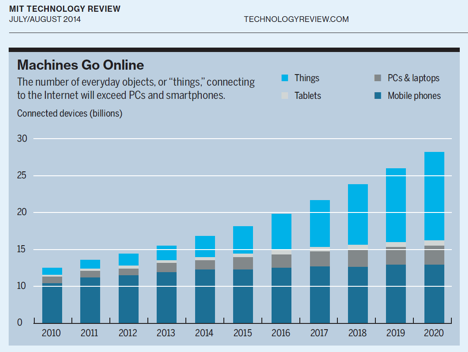
“And it’s not just technology companies that must stay alert this time around. The reason, explains Marshall Van Alstyne, a professor at Boston University, is that as ordinary products become connected, their manufacturers may enter information businesses whose economics are alien to them. It’s one thing to manufacture shoes, but what about a shoe that communicates? Products could turn out to be valuable mainly as the basis for new services. ‘You might find the data is more valuable than the shoe,’ says Marshall Van Alstyne.” In his comment on the Economics of the Internet of Things[xiii]
This is a unique business environment, a lifetime of global transformation. Since disruptive technology has become a business model all of its’ own, there may be fewer eureka idea fountains from which to glean a lifetime of profit. It will more likely be, “we have found the answer for a while….until we find it again or until others find the answer.” This fundamentally changes the valuation of a business.
An article on the economic internet of things published by the MIT Technology review in July/August 2014 points to this type of phenomena called platform businesses. “If you produce the value, then you are a classic product company. But there are new systems where value is being created outside the firm, and that’s a platform business. These are businesses that create a platform for innovation to happen on rather than only focus on bringing innovation themselves.”[xiv] -MIT Technology Review The ability to adapt and bring new technology will likely be valued higher than the technology itself. So it is an organizations ability to continue to adapt with waves of technology more than a one-time watershed moment that matters most.
Thoughts to Consider
- Are you thinking of IIoT as a one-time event or as continuous?
- Are you a traditional product company or a platform company?
- If you are a traditional product company, can you consistently deliver top performing products?
- What would it take for your company to transform to a platform business?
Summary
Look at the changing landscape of industry and consider the possibilities. The ocean is wide open and there is plenty of beach real estate to stake your digital claim in.
You are just as capable of swimming, surfing and excelling in IIoT (Industry 4.0) as the next person. It just takes a commitment to learn, take some risk, and to change. Although taking risks and fast changes have traditionally not been what big industry or manufacturing are known for, there are ways that this can be done while keeping stability. Understanding how to implement and use more data in small venues will give experience to companies to then increase IIoT project scope. The majority of industry leaders are still learning to orient, steady, and maneuver themselves in swift currents of big data. This transition will take some time.
Create lasting partnerships with those who can adapt with you. Balance your team with creative thinkers, problem solvers, and operations experts. Choose to partner with companies that can accommodate your future and see your changing needs. Whoever you partner with will need to understand where you are going and methods needed to get there.
The IoT or IIoT (Industry 4.0) wave is the new wave of doing business that is here to stay. As such, it will take some time to permeate industry. It will happen over years and the full consequences will be seen decades later. As much as the internet has revolutionized the way business is done, so will the IIoT. It’s the perfect time to catch this wave. Hang Ten!
 Contact one of our consultants today for a free consultation on how to integrate IIoT hardware into your organization.
Contact one of our consultants today for a free consultation on how to integrate IIoT hardware into your organization.
Endnotes
- [i] http://breakingenergy.com/2015/06/10/ge-and-cisco-back-bit-stew-systems-software-for-the-industrial-internet-of-things/
- [ii] http://www.ge.com/docs/chapters/Industrial_Internet.pdf
- [iii]http://www.designnews.com/author.asp?section_id=1386&doc_id=277705&dfpPParams=ind_182,industry_auto,industry_consumer,kw_robotics,kw_46,aid_277705&dfpLayout=blog
- [iv] http://www.information-age.com/it-management/strategy-and-innovation/123459643/three-steps-iot-grow-get-out-house-and-industry#sthash.B4xfycBO.dpuf
- [v] https://iot-audit.wistia.com/medias/h9waircnb1?embedType=api&videoWidth=480
- [vi] http://www.iotaudit.com/
- [vii] http://www.information-age.com/it-management/strategy-and-innovation/123459643/three-steps-iot-grow-get-out-house-and-industry#sthash.B4xfycBO.dpuf
- [viii] http://www.surfline.com/surfology/surfology_glossary_index.cfm
- [ix] http://www.automationworld.com/its-not-internet-things-its-business-case
- [x] http://www.ge.com/docs/chapters/Industrial_Internet.pdf
- [xi] http://www.information-age.com/it-management/strategy-and-innovation/123459643/three-steps-iot-grow-get-out-house-and-industry#sthash.B4xfycBO.dpuf
- [xii] http://www.airbusgroup.com/int/en/story-overview/factory-of-the-future.html
- [xiii]– http://www.technologyreview.com/news/527356/business-adapts-to-a-new-style-of-computer/
PDF Downloads:
- Evans, Peter C., and Marco Annunziata. “Industrial Internet: Pushing the Boundaries of Minds and Machines.” GE PDF for Download (2012): n. pag. 26 Nov. 2012. Web. 10 June 2015.
- “How the Internet of Things Will Change Business | MIT Technology Review.” MIT Technology Review. N.p.’ July-Aug. 2014. Web. 10 June 2015.


